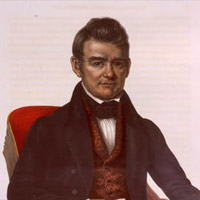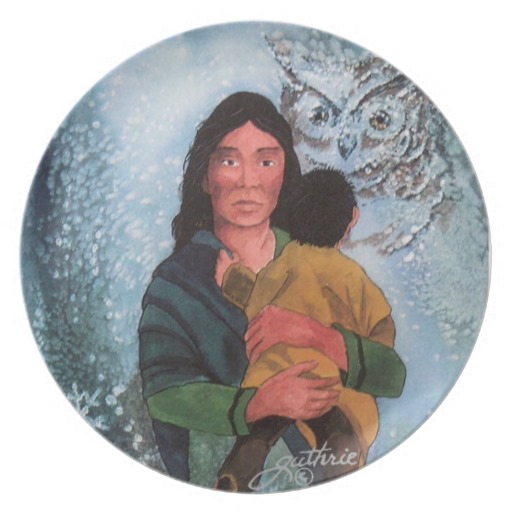
John Ross (Cherokee)
Little John
"By peace our condition has been improved in the pursuit of civilized life."

"By peace our condition has been improved in the pursuit of civilized life."
John Ross, Chief of the United Cherokee Nation from 1839 to 1866, was
born on October 3, 1790 near Lookout Mountain, Tennessee. Although his
father was Scottish and his mother only part Cherokee, Ross was named
Tasman-Usda (Little John) and raised in the Cherokee tradition. A
settled people with successful farms, strong schools, and a
representative government, the Cherokee resided at that time on
approximately 43,000 square miles of land, located mainly in Georgia,
which they had held for centuries.
John Ross (October
3, 1790–August 1, 1866), also known as Guwisguwi (meaning in Cherokee a
"mythological or rare migratory bird"), was the Principal Chief of the
Cherokee Nation from 1828–1866, serving longer in this position than
any other person. Described as the Moses of his people,[1] Ross
influenced the former Indian nation through such tumultuous events as
the relocation to Indian Territory and the American Civil War.
John Ross was only one-eighth Cherokee, the son of a part-Cherokee
mother and a Scottish father. His mother and maternal grandmother were
of mixed Scots-Cherokee ancestry, since his maternal grandfather was
another Scottish immigrant. As a result, young John grew up bilingual
and bicultural, an experience that served him well when his parents
decided to send him to schools that served other mixed-blood Cherokees.
After graduation, he was appointed an Indian agent in 1811. During the
War of 1812, he served as adjutant of a Cherokee regiment under the
command of Andrew Jackson. After the Red Stick War ended, Ross
demonstrated his business acumen by starting a tobacco farm in
Tennessee. In 1816, he founded a community known as Ross' Landing on
the Tennessee River (now modern-day Chattanooga, Tennessee). There, he
built a warehouse and trading post, as well as starting a ferry
service. Concurrently, John Ross developed a keen interest in Cherokee
politics, attracting the attention of the Cherokee elders, especially
Principal Chiefs Pathkiller and Charles R. Hicks, who, along with Major
Ridge, became his political mentors.
Ross first went to Washington, D.C. in 1816 to as part of a Cherokee
delegation to negotiate issues of national boundaries, land ownership
and white encroachment. As the only delegate fluent in English, Ross
became the principal negotiator, despite his relative youth. When he
returned to the Cherokee Nation in 1817, he was elected to the National
Council. He became council president in the following year. The
majority of the council were men like Ross, who were wealthy, educated,
English-speaking and of mixed blood. Even the traditionalist full-blood
Cherokees perceived that he had the skills necessary to contest the
white's demands that the Cherokees cede their land and move beyond the
Mississippi River. In this position, Ross' first action was to reject
an offer of $200,000 from the US Indian agent made for the Cherokees to
voluntarily relocate. Thereafter, Ross made more trips to Washington,
even as white demands intensified. In 1824, Ross boldly petitioned
Congress for redress of Cherokee grievances. The first time a tribe had
ever shown the audacity to do such a thing. Along the way, Ross built
political support in the capital for the Cherokee cause.

QUATIE'S BLANKET
"On the Trail of Tears, Chief John Ross led the last detachment made up of many elderly people and children. Among the people lost was the Chiefís beloved wife Quatie. Though already suffering she gave up the only blanket shielding her from the elements. The compassion Quatie showed a sick child cost her, her life."
(quoted from QUATIE'S BLANKET")
|
John Ross a North Georgia Notable Ross House,
Rossville, Georgia Home of John
Ross, |
![]() Return to Indigenous Peoples' Literature
Return to Indigenous Peoples' Literature
Compiled by: Glenn Welker
This site has been accessed 10,000,000 times since February 8, 1996.
ghwelker@gmx.com